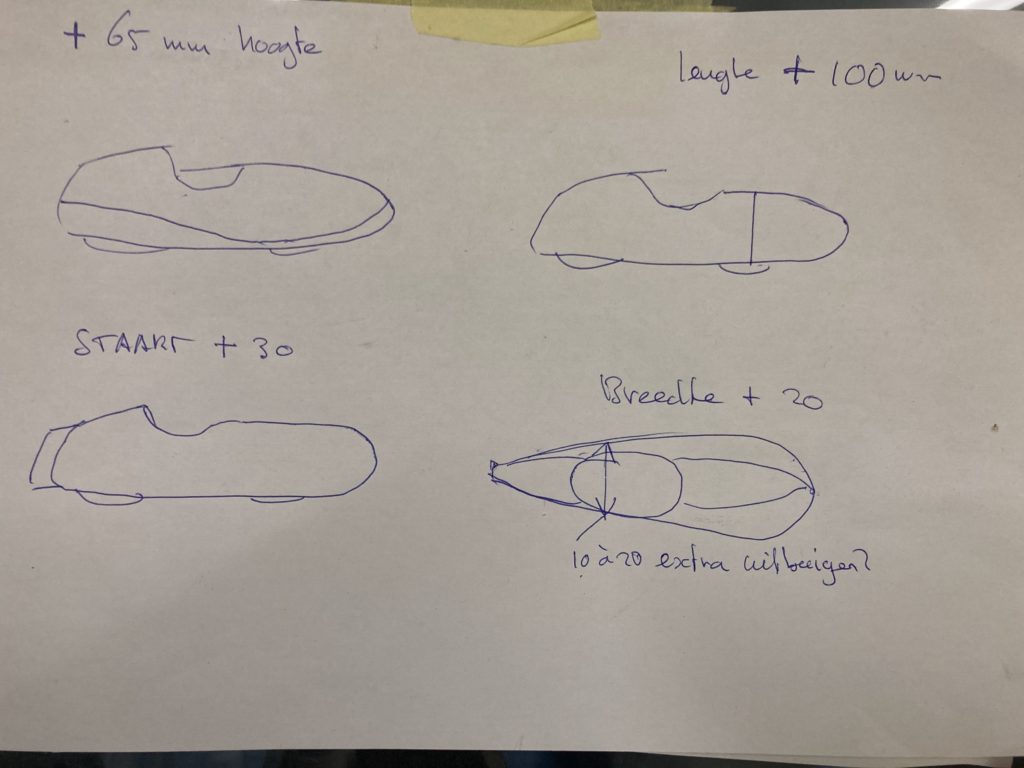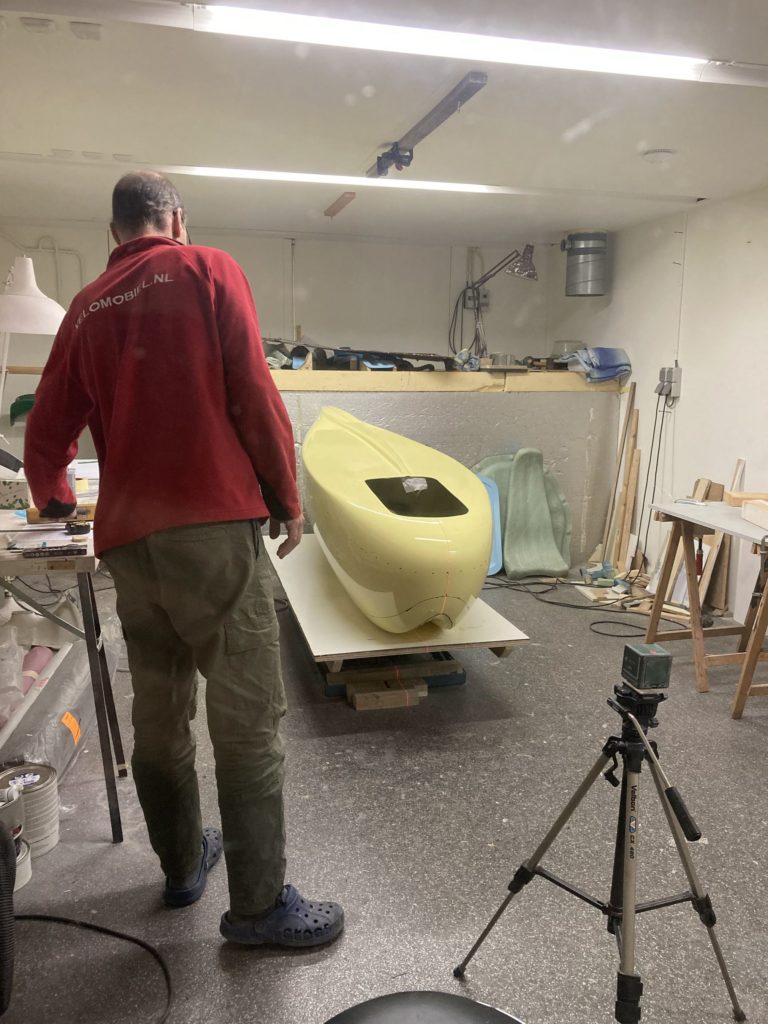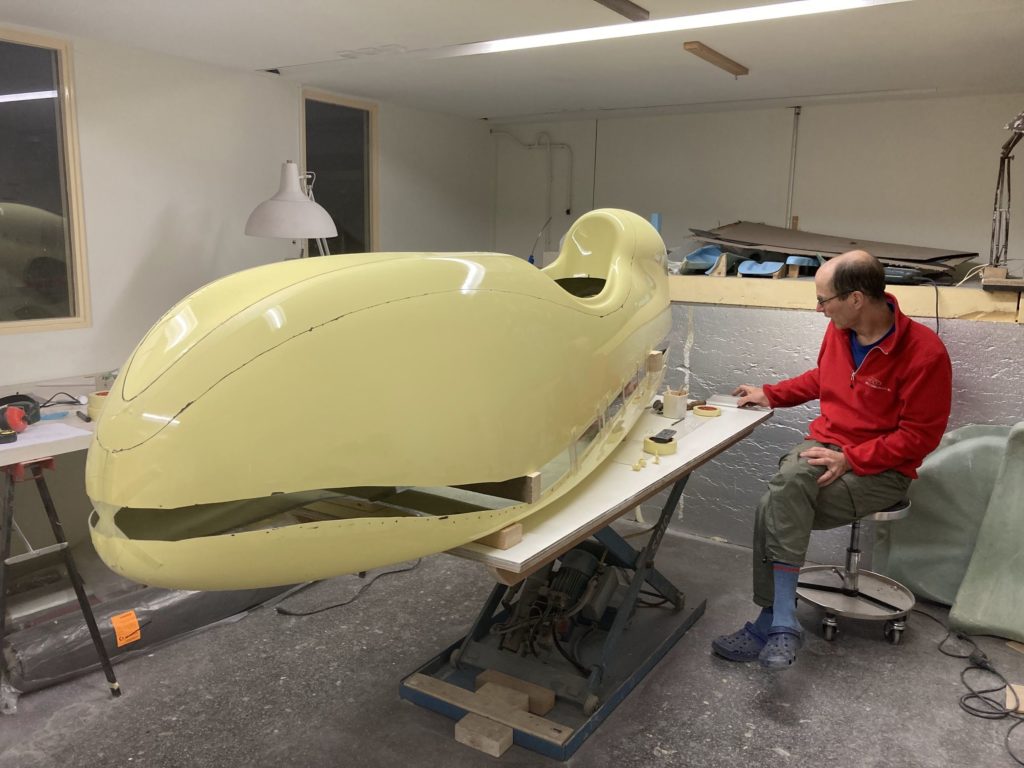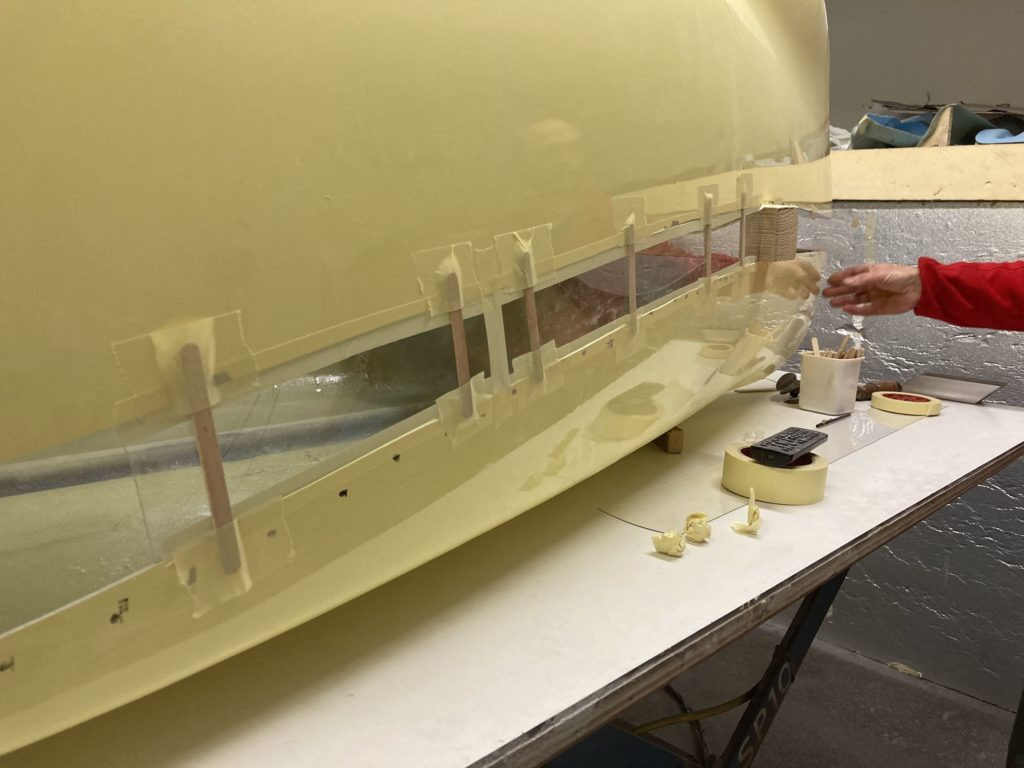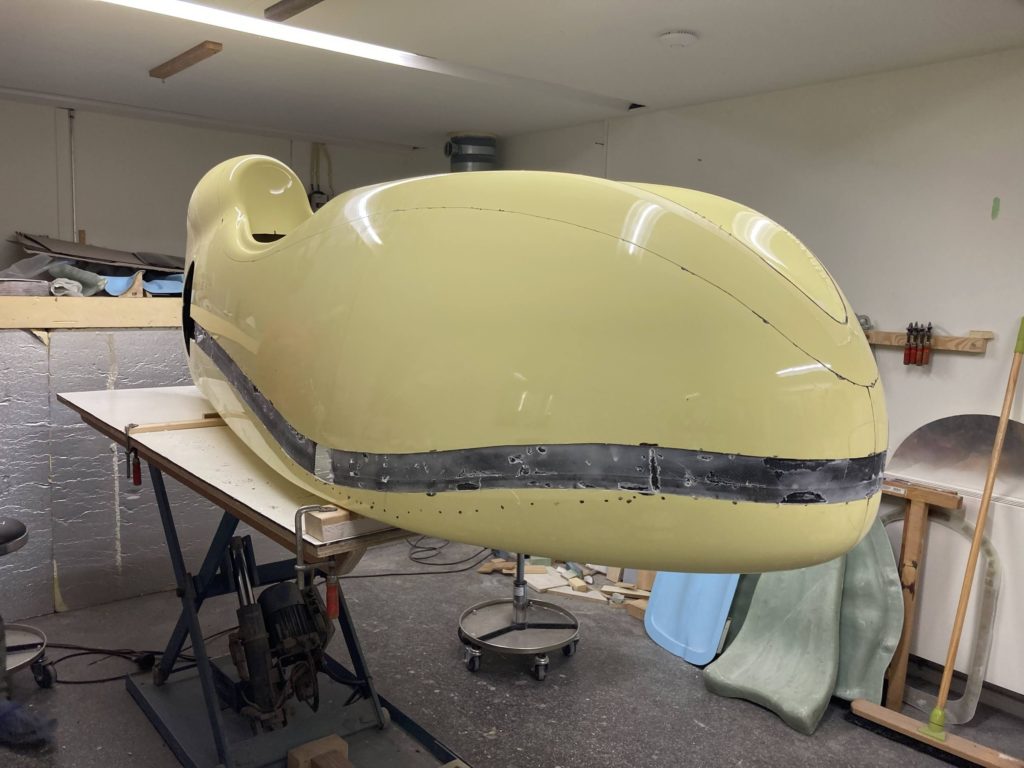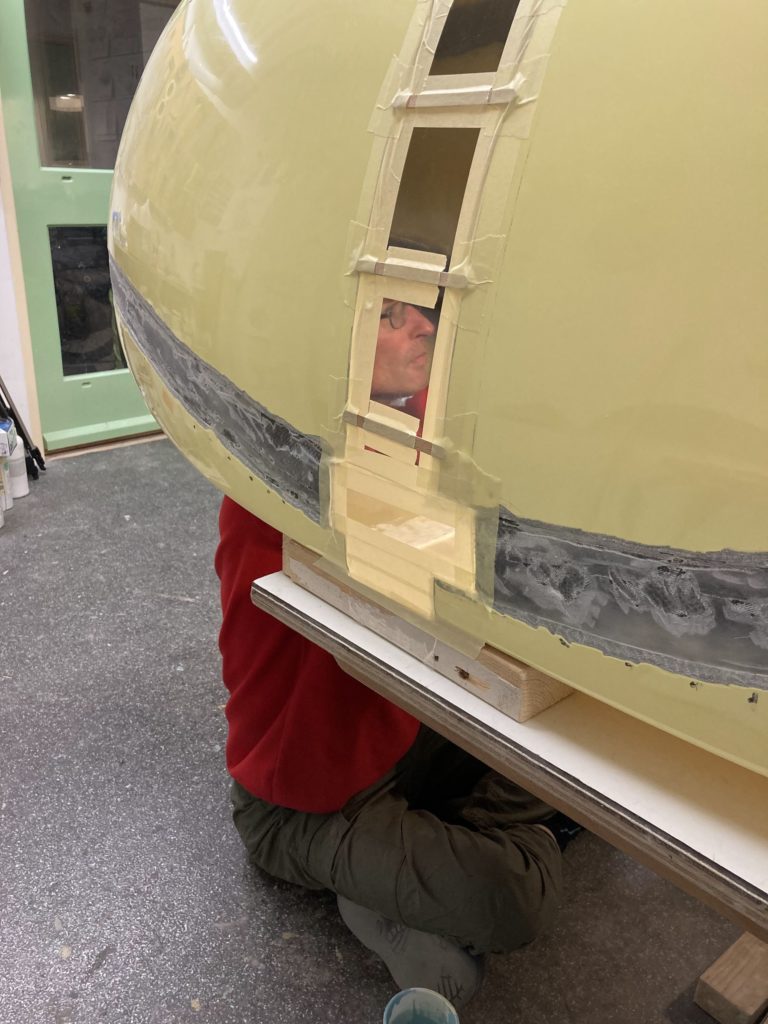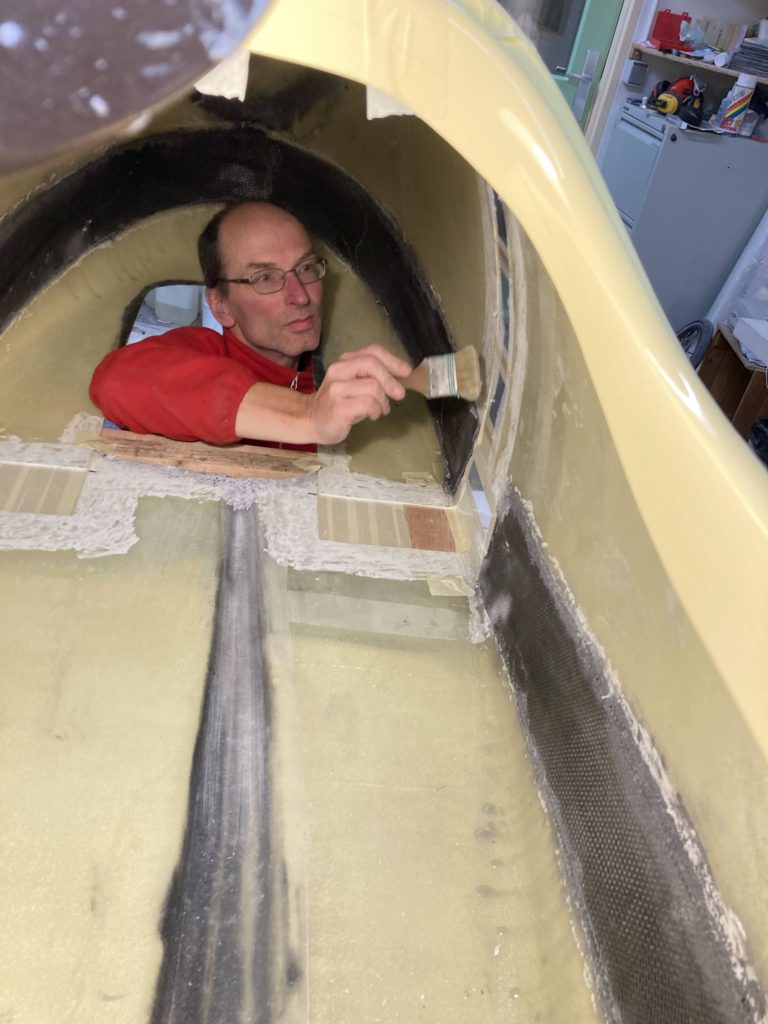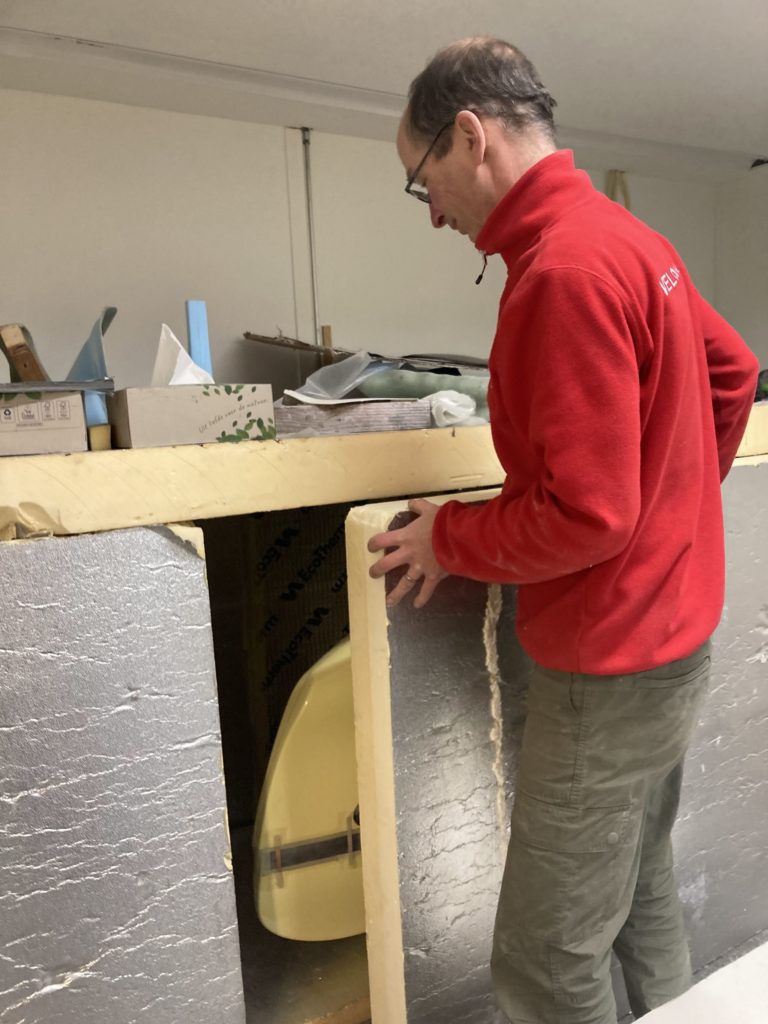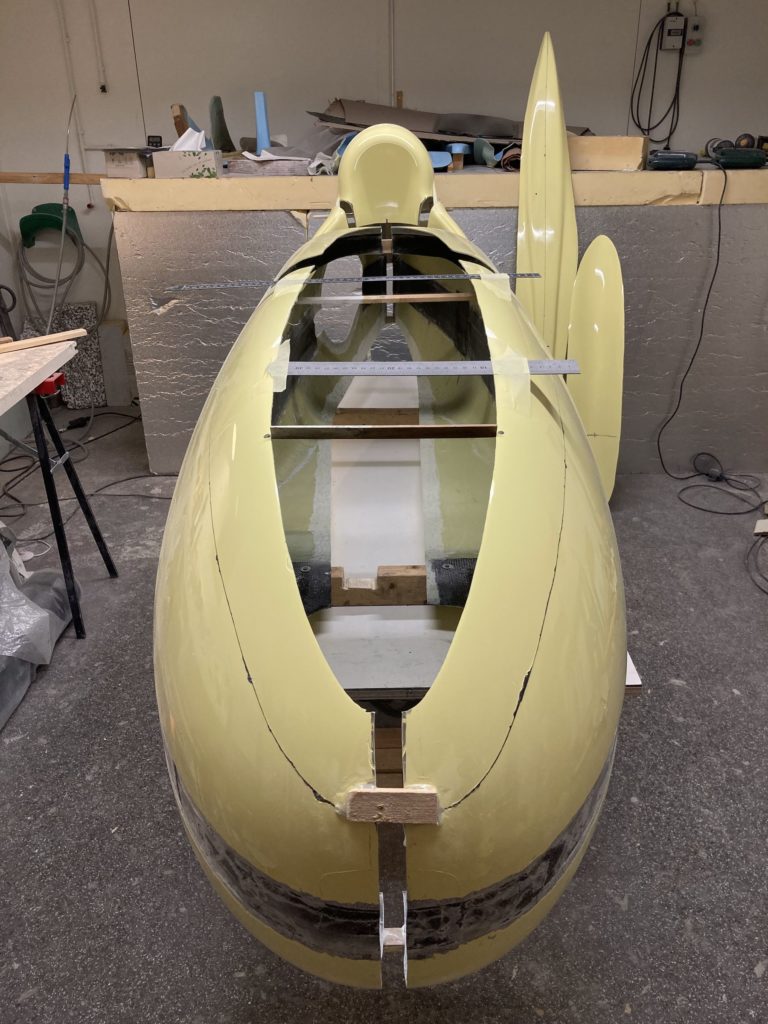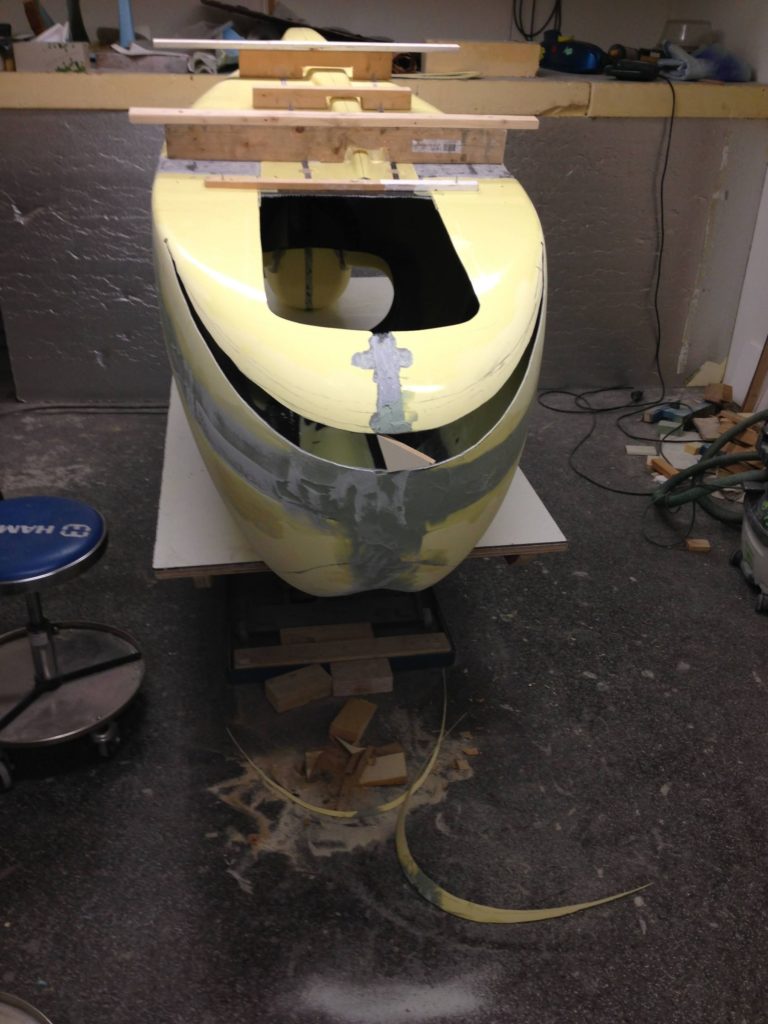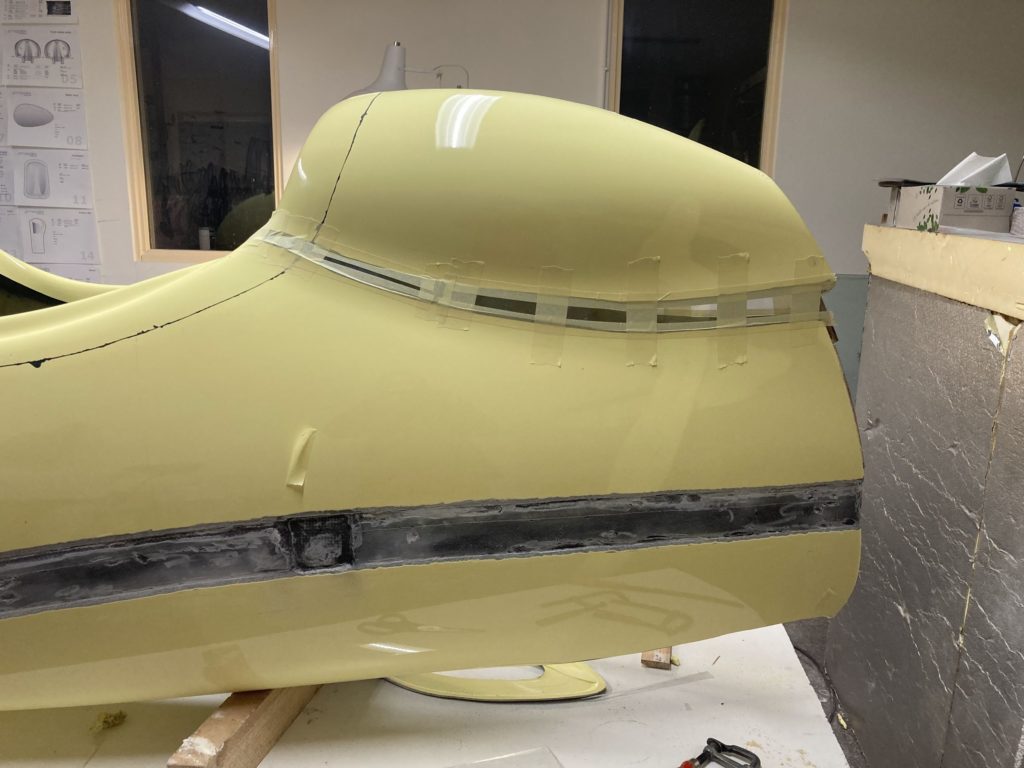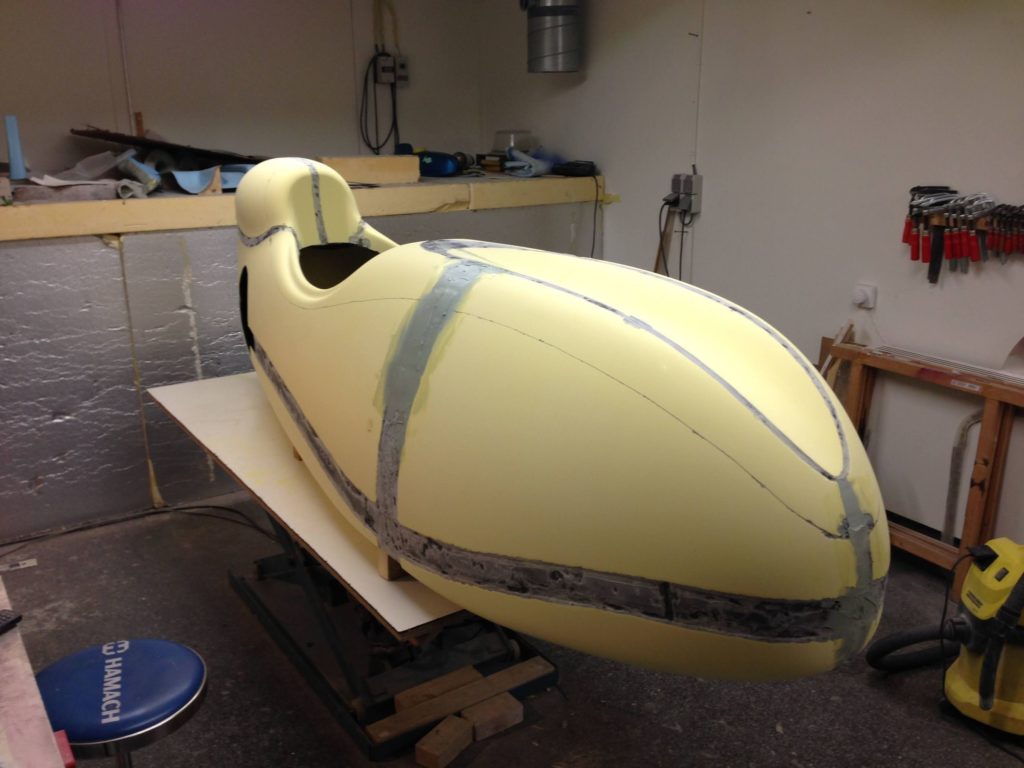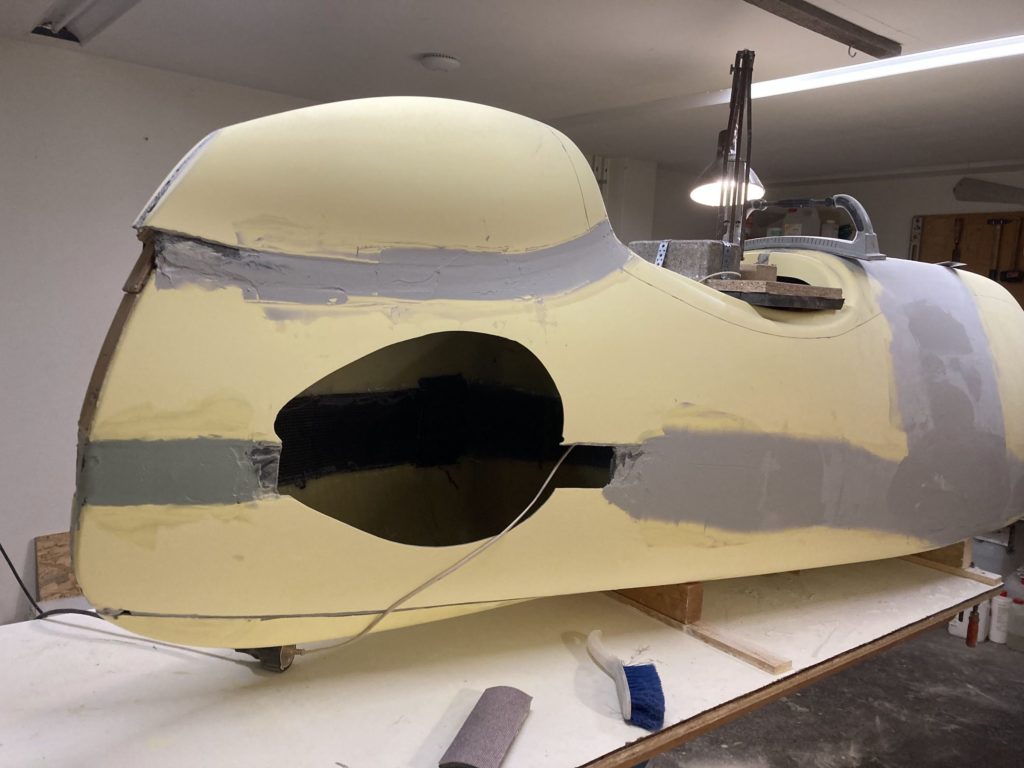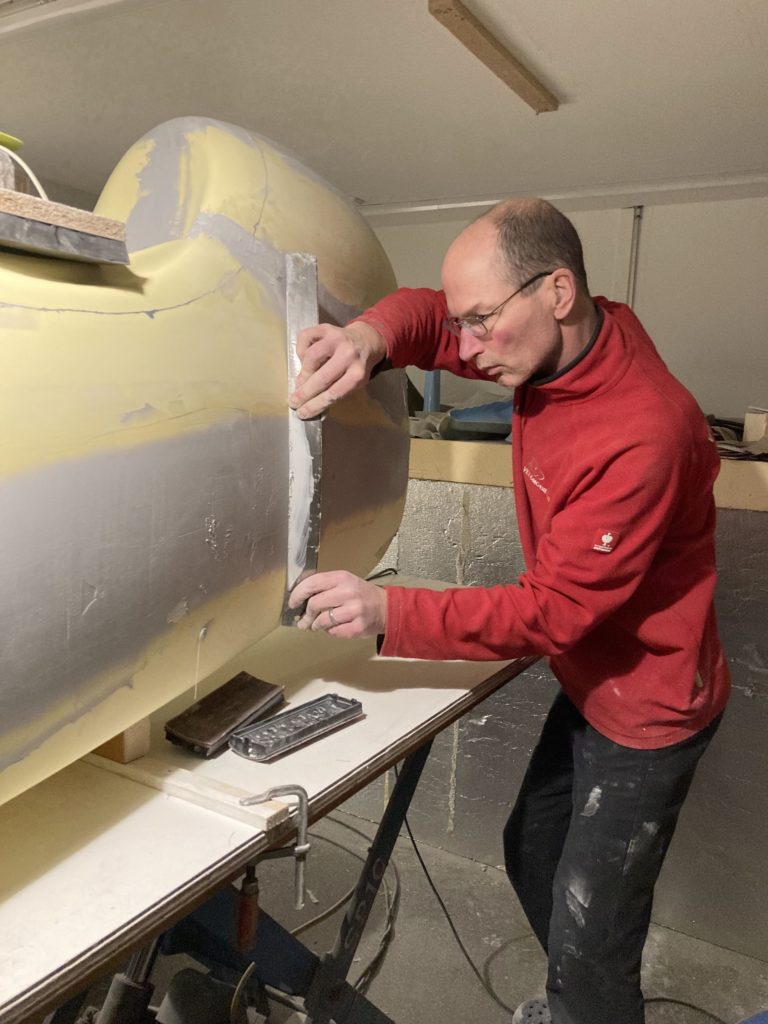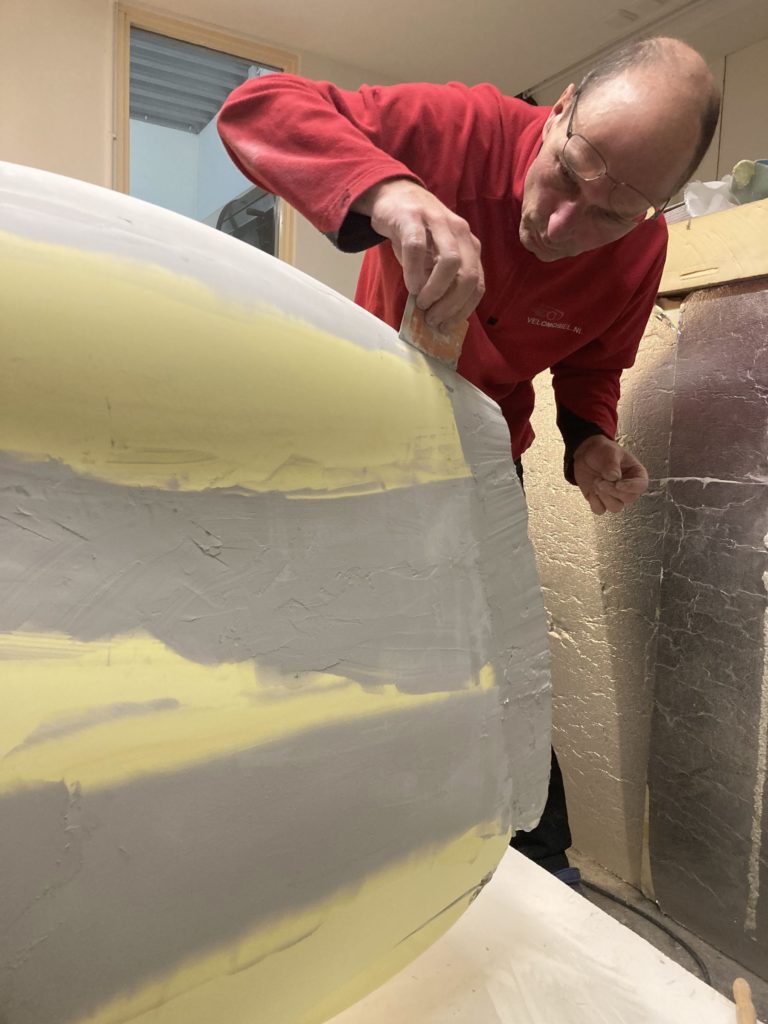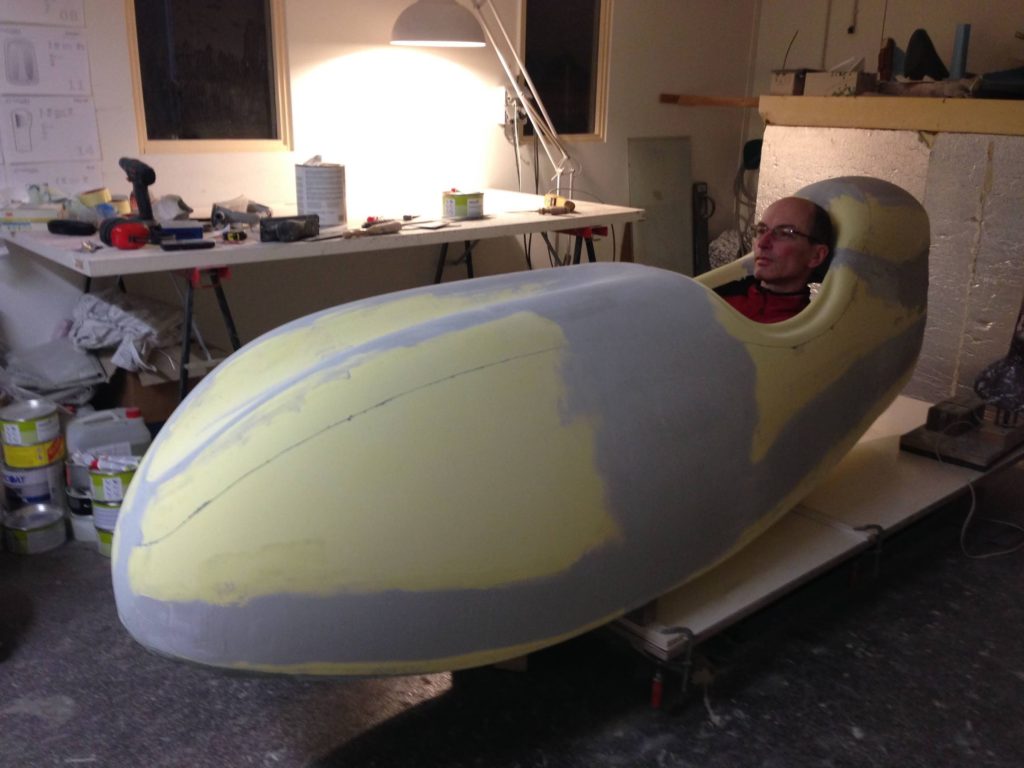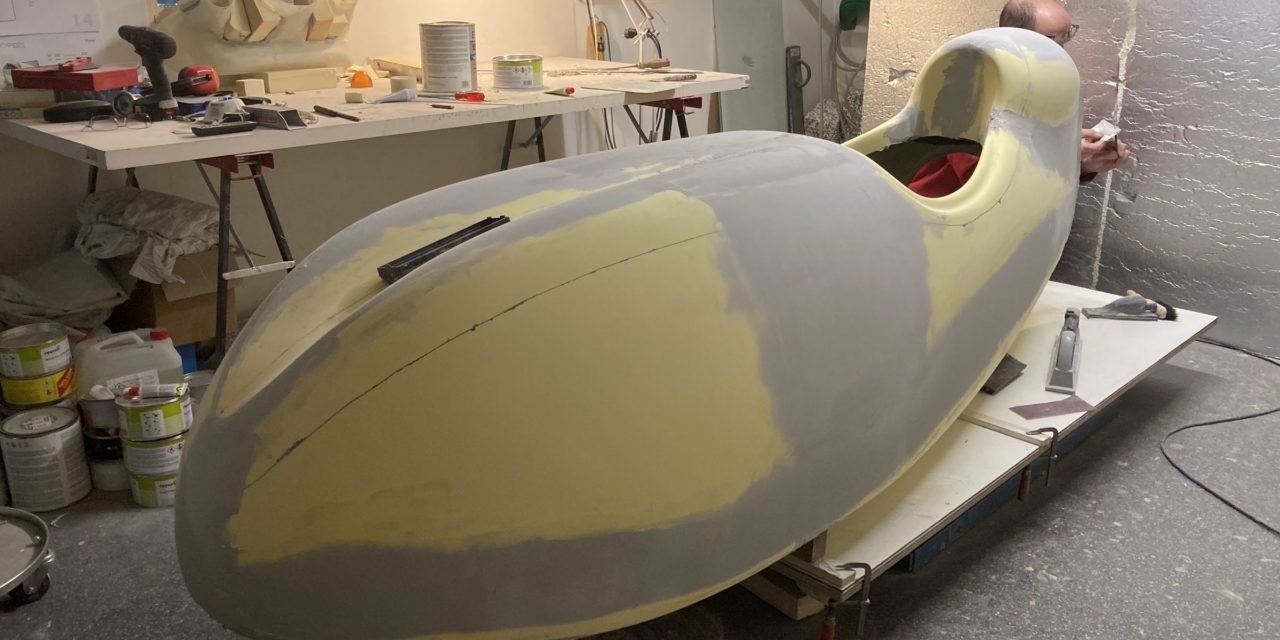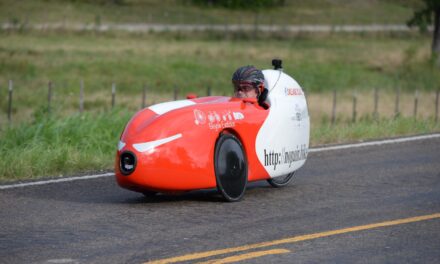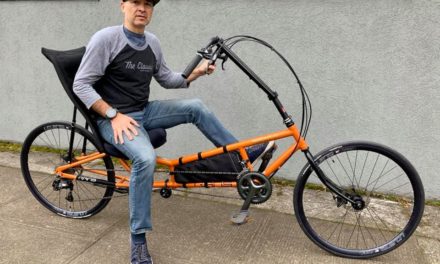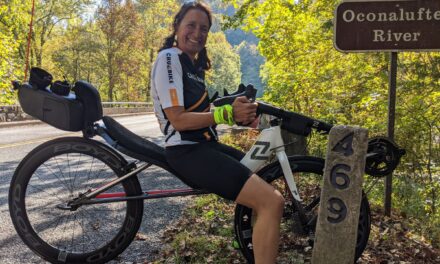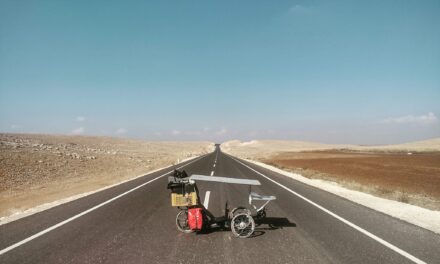After a very successful article called “Is this the fastest velomobile?” I have published another one with a series of Snoek videos some time ago. Right after that, information about the Snoek L development has appeared on the internet. See here. The major limitation of the original Snoek is the rider’s height, as only those up to 182 cm (6 feet) fit inside. The new L version should be for much taller guys. Guys up to 196 cm (6′ 5″). People at Velomobiel.nl hope that the first prototype will be ready before summer, and the production will start this year.
I have asked Allert Jacobs, co-owner of the Velomobiel.nl few questions.
Why did you start to develop the Snoek L?
I would like to have one that fits me and Theo would like that too.
When developing the Snoek the basis for comparison was the Quest XS. Does it make sense to compare the Snoek L with the standard Quest?
The Snoek has a 20% smaller frontal area that the Quest XS this was measured, I estimated the drag coefficient (Cd) could also be 20% less with less wheels and head sticking out of the shell, lower nose, smaller wheel openings etc.
Let’s set the aerodynamic drag of the XS at 10×10=100% than the drag of the Snoek at 8×8=64% of the XS drag. This figure seems not to be to far off, the speed increase obtained by lower aero drag is varying with speed. At 25 km/h (15.5 mph) it will be very small while at 50 km/h (31 mph) it will be much bigger.
If the Quest and the Snoek L would be compared in this way the outcome will be close to the XS and Snoek comparison.
What are the target differences in terms of aerodynamic drag and weight?
The Snoek L will not be as fast and light as the Snoek but it will have a stronger motor in most cases. Although it will be hard to beat Mathias in a Snoek for any combination of velomobile and rider.
Some people were commenting on the fact that at the beginning the Snoek had like 20 kg, but from Romania, it is 25 kg.
About the weight: The first Snoek was indeed 20,2 kg (44 lbs) – without an electrical system and racing hood, with lightweight rims with 28 spokes, one chain wheel and 70mm drum breaks. Now it is 21,5 kg (47.4 lbs) with el. sys., heavier rims, front derailleur and a cover of the swingarm.
The lightweight rims we had only for 3 Snoeks, are at this moment not on market (just like many other components). This problem adds ca 600 g (1.3 lbs)…
And the rest of the extra weight is mainly in the choice of components from the customer self:
- 8 of 10 customers had 90mm drum brakes – 580 g (1.28 lbs) extra!
- electrical system B%M – 720 g (1.59 lbs) extra
- electrical system Lupine – 980 g (2.16 lbs) extra
- 2 chain-wheels/shifter/derailleur – ca 390g (0.86 lbs) extra – depends on the number of teeth
- Mountain Drive – 800 g (1.76 lbs) extra
- a racing hood – 1100 g (2.43 lbs) extra
- a tyre choice, type of mirror, type of foot hatch and different paint – XXX g extra…
Plus yes, in the Romanian factory are still some issues about lamination.
Will you make any changes to the rear fork or the drive-train itself?
The single side rear wheel with aluminum swing-arm will stay the same.
Will there be enough shoulder space even for well-built guys?
The overall width is increased with 2 cm that is the same for the width at the shoulders, it will be too narrow for some guys.
Are there any other changes planned?
The bottom at the nose will be raised a few cm to give more clearance on speed bumps etc.
The clearance in-between the axles will stay the same.
Thank you for the interview!
More than interesting are the photos from Allert’s family garage where the development of the Snoek has been held. I always love to see some behind-the-scenes images and videos, and having the opportunity to see how a new model is born by cutting an older one is terrific. Such practice can appear somewhat amateurish for some people, but it works great for Velomobiel.nl. It is also fast and highly effective.
